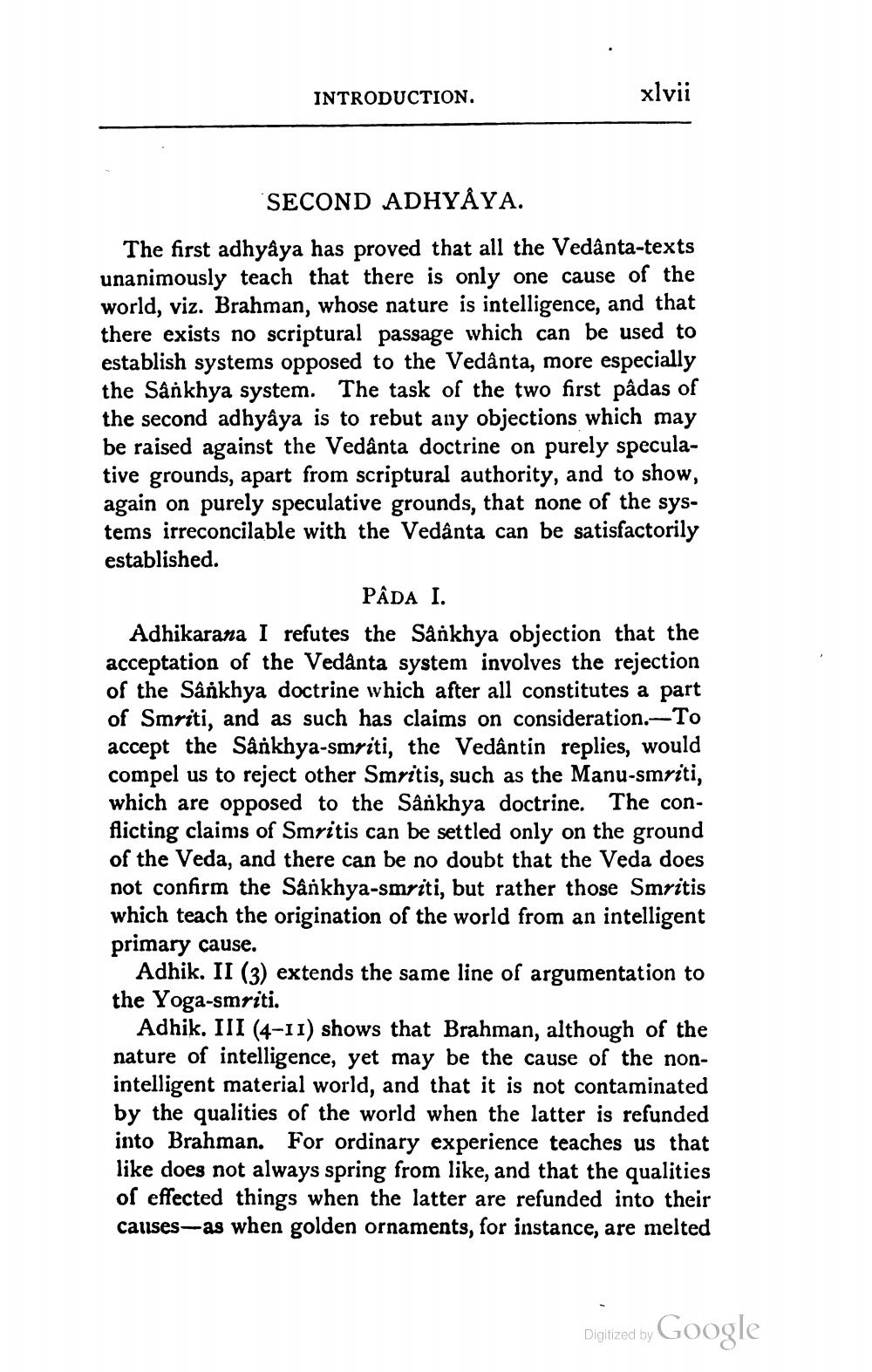________________
INTRODUCTION.
xlvii
SECOND ADHYÅYA. The first adhyâya has proved that all the Vedânta-texts unanimously teach that there is only one cause of the world, viz. Brahman, whose nature is intelligence, and that there exists no scriptural passage which can be used to establish systems opposed to the Vedânta, more especially the Sankhya system. The task of the two first pâdas of the second adhyâya is to rebut any objections which may be raised against the Vedanta doctrine on purely speculative grounds, apart from scriptural authority, and to show, again on purely speculative grounds, that none of the systems irreconcilable with the Vedanta can be satisfactorily established.
PADA I.
Adhikarana I refutes the Sankhya objection that the acceptation of the Vedanta system involves the rejection of the Sankhya doctrine which after all constitutes a part of Smriti, and as such has claims on consideration. To accept the Sankhya-smriti, the Vedântin replies, would compel us to reject other Smritis, such as the Manu-smriti, which are opposed to the Sankhya doctrine. The conflicting claims of Smritis can be settled only on the ground of the Veda, and there can be no doubt that the Veda does not confirm the Sânkhya-smriti, but rather those Smritis which teach the origination of the world from an intelligent primary cause.
Adhik. II (3) extends the same line of argumentation to the Yoga-smriti.
Adhik. III (4-11) shows that Brahman, although of the nature of intelligence, yet may be the cause of the nonintelligent material world, and that it is not contaminated by the qualities of the world when the latter is refunded into Brahman. For ordinary experience teaches us that like does not always spring from like, and that the qualities of effected things when the latter are refunded into their causes—as when golden ornaments, for instance, are melted
Digitized by Google




